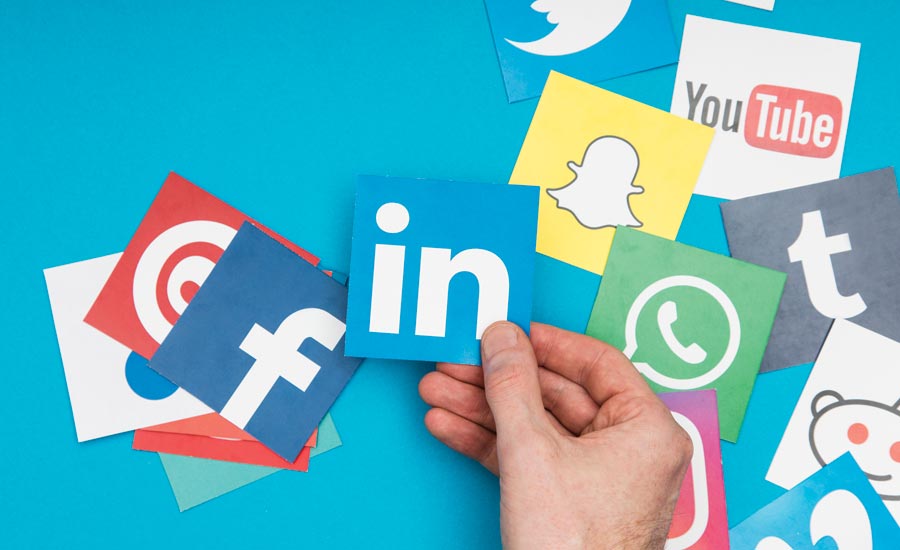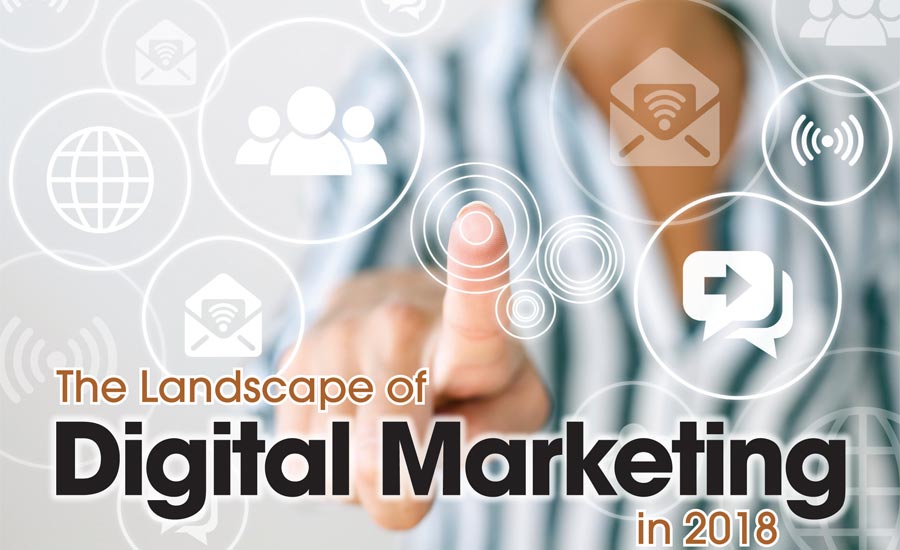The landscape of digital marketing is changing. The view is more expansive than ever as customer behavior continues to become more impatient, and more demanding. The growth of mobile plays directly into this behavior and feeds the demand for immediacy and convenience. The question for 2018 is how can your company capitalize on these behaviors to increase your presence in a fast-paced digital world?
At Advertising Week in New York, Unilever’s Chief Marketing and Communications Officer, Keith Weed, discussed how the explosion of mobile in our daily lives has “empowered consumers with ability to access, order, research and buy anything, anytime, anywhere”.
Think about it, how many times a day do you check your phone? According to Google, the average person looks at their phone 150 times per day and spends 177 minutes on their phones daily. Additionally, each of these mobile sessions lasts only 70 seconds. This is resulting in a move to market for the micro-moments of everyday life.
We are literally living our lives in micro-moments. Google defines micro-moments as critical touch points within today’s consumer journey and when these touch points are added together, they ultimately determine how that journey ends.
“Our connected world combined with unprecedented data and consumers’ growing demand for immediacy has changed the landscape of marketing,” said Weed. “The real driver of these changes is the mobile phone. Digital marketing success in 2018 will involve an integrated strategy that allows you to reach customers in the micro-moments of their life.”
If we are living in micro-moments then we must adjust marketing strategies to accommodate it. Let’s examine two main concepts at the forefront of marketing in 2018.
The Customer Journey
Consumers do not want to be marketed to all the time. Ultimately, they are in the driver’s seat now because they hold the power in their hands constantly. Your customers choose how they like to interact with brands online. They choose the channels they want to be on, and they choose how to communicate. Your company has to be there with them, or you risk losing them completely.
Consumers definitely do not want to be interrupted with your message, yet when they want or need your services, they expect to find you immediately and have access to you with a single click. If you are going to be where they are, when they want you, then it is critical to put some focus on your customer’s journey. What are the micro-moments that lead them to choose you and how can you be there at that moment?

Consumers definitely do not want to be interrupted with your message, yet when they want or need your services, they expect to find you immediately and have access to you with a single click.
Google refers to these as “I-want-to-know, I-want-to-go, I-want-to-buy, and I-want-to-do moments.” These are the moments when customers turn to their smartphone to take action. You’ve got to anticipate the micro-moments for customers in your industry, and then have a plan to be there when those moments occur.
Here are a few examples of micro-moments that might drive a customer online for cleaning and restoration services:
- I-want-to-know moment: A spill on the carpet leads to a search on “how to remove spaghetti sauce from carpet”. Will they find your blog and videos with instructions?
- I-want-to-buy moment: My mother-in-law is coming for a visit leads to a search on “how often should I have my carpet cleaned” or “who is the best carpet cleaner in my area”. Will they see your 5-star reviews and Facebook posts?
- I-want-to-buy moment: Your neighbor is getting their carpet cleaned leads to you wanting your carpet cleaned also. Will your ad be at the top of Google?
The question is, when they pick up their phone for that 70-second glance will they see your brand? Will you answer their question? Will you capture their business? Start by mapping their journey. You need to be able to answer three key questions.
#1 – Persona: What is my customer’s persona?
You may have several of these, but try to determine what is your customer’s situation? Do they own a home or rent? Do they need an emergency service or will they be scheduling? What is their emotional state?
#2 – Outcomes: What is your ideal customer trying to achieve?
Are they looking for the best price or the best value? Will they hire the first to arrive or expect referrals?
#3 –Journey: Where are your customers?
Creating maps based on customers or the personas your company defines as the type of customers you want will help position you for success. Now it’s time to determine how you can reach them on their different journeys. Where will they interact with your company and how can you be there at all the touch points? This is where an integrated digital strategy is critical.
What is Integrated Digital Marketing?
You can’t just advertise on the radio or only do SEO anymore. Failure to integrate multiple marketing channels will leave you wondering why you can’t attract more customers. Once you determine the paths your customers are most likely to take, you need a plan to be visible each step along the way.
Generally speaking, there are four main parts to this picture that should be at the core of your strategy. If you have an online presence in these four places, you will inevitably hit your customers at various places throughout the sales process.
Be social. Let people know, like, and trust your brand before they ever need you. You do not need to have a presence on every social platform, just the ones those ideal clients are on.
1) Google AdWords (SEM)
Google Adwords has changed significantly over the past several years. The top four spots on the Search Engine Result Pages (SERP’s) are paid. If you want to be at the top of the page on Google (which you do), then you will need to pay to play. The good news is Google has improved the customer experience with PPC and these ads are consistently gaining trust with consumers and converting better than ever!
Using data from Google, you’ll be able to understand more about your audience. With advanced tracking, you can know what your customers searched and how they became a customer. These features can take the guesswork out of your marketing.
Adwords is much more than just pay-per-click on text ads. The Google display network will allow you to not only retarget people who have been to your website, but can put you in front of selected audiences that you want to reach. Google intelligence is vast and by creating smart audiences, interests, and even uploading your email list, Google helps you find the exact people you want to reach.
If you are wondering where to start with your marketing in 2018, this is the place. AdWords attracts customers whose searches are intent-based. They are already at the bottom of the funnel ready to make a purchasing decision.
2) Organic Search (SEO)
Search Engine Optimization reinforces you as the best choice. SEO and SEM go hand-in-hand and work better together. Ranking high organically gives you credibility as a leader and actually increases the likelihood of someone clicking on your paid ad.
Here are some quick facts from Google:
- When an organic and paid result show up on the same page, customers are 45% more likely to call or fill out a form on your website.
- An integrated search engine marketing strategy results in an increase of 39% in the time a user will spend on your website.
Remember when you are driving customers to your website, you need to design your content specifically for a mobile web experience. Be sure your site is fast and secure. If your site takes longer the 3 seconds to load, then 53 percent of users will bounce and go in search of a faster, more convenient experience.
1) Google My Business
Be sure you have a verified business listing. This is free and takes only a few minutes. If you want to have a presence in the map listings, also referred to as the 3-pack on page one of Google, then it all starts with a verified listing. If you haven’t done this yet, go to https://www.google.com/business and complete it today! This is where you want to get reviews! According to an article in Inc., 89 percent of consumers viewed online sources of product and service reviews as trustworthy – another 80 percent have changed their minds about a purchase based solely on the negative reviews they have read.
2) Social Media
Be social. Let people know, like, and trust your brand before they ever need you. You do not need to have a presence on every social platform, just the ones those ideal clients are on. Your social presence is a great boost to brand and a strong touch point on the customer journey. In any social strategy, you want to remember to be consistent and authentic.

Be social. Let people know, like, and trust your brand before they ever need you. You do not need to have a presence on every social platform, just the ones those ideal clients are on.
What are the big takeaways here? Your customers are increasingly demanding and impatient so you must know them and have a plan to reach them with speed and convenience along their path to purchase. The marketing landscape in 2018 will require speed and convenience at every turn. Anticipate your customer’s intent and be in front of them with helpful information and most importantly, deliver fast and compelling experiences in the moments that matter.

